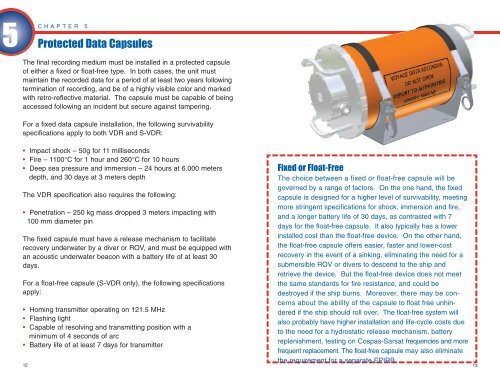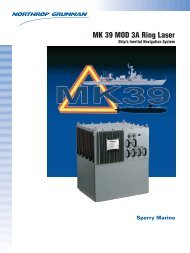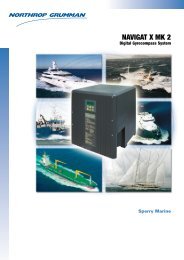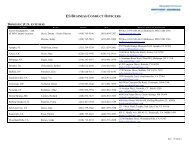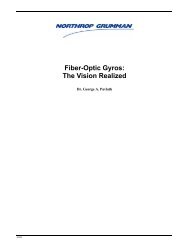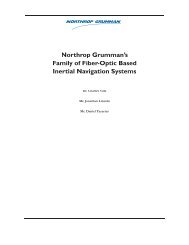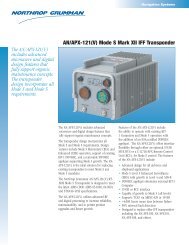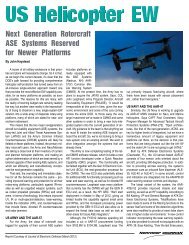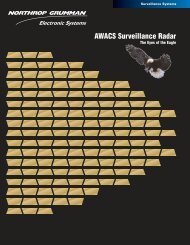A Practical Guide to Marine Voyage Data Recorders for Newbuilds ...
A Practical Guide to Marine Voyage Data Recorders for Newbuilds ...
A Practical Guide to Marine Voyage Data Recorders for Newbuilds ...
You also want an ePaper? Increase the reach of your titles
YUMPU automatically turns print PDFs into web optimized ePapers that Google loves.
5<br />
CHAPTER 5<br />
Protected <strong>Data</strong> Capsules<br />
The final recording medium must be installed in a protected capsule<br />
of either a fixed or float-free type. In both cases, the unit must<br />
maintain the recorded data <strong>for</strong> a period of at least two years following<br />
termination of recording, and be of a highly visible color and marked<br />
with retro-reflective material. The capsule must be capable of being<br />
accessed following an incident but secure against tampering.<br />
For a fixed data capsule installation, the following survivability<br />
specifications apply <strong>to</strong> both VDR and S-VDR:<br />
• Impact shock – 50g <strong>for</strong> 11 milliseconds<br />
• Fire – 1100°C <strong>for</strong> 1 hour and 260°C <strong>for</strong> 10 hours<br />
• Deep sea pressure and immersion – 24 hours at 6.000 meters<br />
depth, and 30 days at 3 meters depth<br />
The VDR specification also requires the following:<br />
• Penetration – 250 kg mass dropped 3 meters impacting with<br />
100 mm diameter pin<br />
The fixed capsule must have a release mechanism <strong>to</strong> facilitate<br />
recovery underwater by a diver or ROV, and must be equipped with<br />
an acoustic underwater beacon with a battery life of at least 30<br />
days.<br />
For a float-free capsule (S-VDR only), the following specifications<br />
apply:<br />
• Homing transmitter operating on 121.5 MHz<br />
• Flashing light<br />
• Capable of resolving and transmitting position with a<br />
minimum of 4 seconds of arc<br />
• Battery life of at least 7 days <strong>for</strong> transmitter<br />
Fixed or Float-Free<br />
The choice between a fixed or float-free capsule will be<br />
governed by a range of fac<strong>to</strong>rs. On the one hand, the fixed<br />
capsule is designed <strong>for</strong> a higher level of survivability, meeting<br />
more stringent specifications <strong>for</strong> shock, immersion and fire,<br />
and a longer battery life of 30 days, as contrasted with 7<br />
days <strong>for</strong> the float-free capsule. It also typically has a lower<br />
installed cost than the float-free device. On the other hand,<br />
the float-free capsule offers easier, faster and lower-cost<br />
recovery in the event of a sinking, eliminating the need <strong>for</strong> a<br />
submersible ROV or divers <strong>to</strong> descend <strong>to</strong> the ship and<br />
retrieve the device. But the float-free device does not meet<br />
the same standards <strong>for</strong> fire resistance, and could be<br />
destroyed if the ship burns. Moreover, there may be concerns<br />
about the ability of the capsule <strong>to</strong> float free unhindered<br />
if the ship should roll over. The float-free system will<br />
also probably have higher installation and life-cycle costs due<br />
<strong>to</strong> the need <strong>for</strong> a hydrostatic release mechanism, battery<br />
replenishment, testing on Cospas-Sarsat frequencies and more<br />
frequent replacement. The float-free capsule may also eliminate<br />
the requirement <strong>for</strong> a separate EPIRB.<br />
12 13


